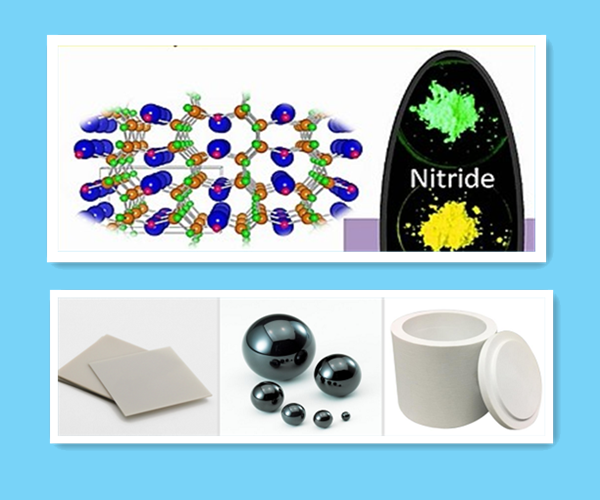Classification of nitride powder
Nitrogen has high electronegativity and can form a series of nitrides with many elements with lower electronegativity, including ionic nitrides, covalent nitrides and metal nitrides.
Application of nitride powder Cutting materials
TiN has high hardness (Mohs hardness: 8~9), high melting point (2950°C) and high wear resistance. It is often used as a coating for cutting tools in industry, which can effectively reduce tool wear and increase cutting rate. , But its hardness is still difficult to meet the requirements of high-hardness products.
The hardness of cubic boron nitride (c-BN) is second only to diamond. As an isoelectronic body of C, it not only has many excellent characteristics of diamond, but also has higher thermal stability and chemical inertness. It is a kind of promising development prospect Tool material.
β-C 3 N 4 is considered to be the hardest material at present and has attracted widespread attention, but its synthesis and characterization are the difficulties of current research.
High temperature structural materials
Silicon nitride (Si 3 N 4) ceramics have high strength, high hardness, low density, corrosion resistance, good thermal shock resistance and excellent high temperature mechanical properties. They are widely used in the reinforcement phase of ceramic matrix composites and are considered the most One of the promising engineering ceramics.
Hexagonal boron nitride (h-BN) is a covalent bond compound. Because of its outstanding properties such as high thermal conductivity, good chemical stability, excellent thermal stability and good electrical insulation, it is widely used Used in the fields of refractory materials and ceramic matrix composite materials.
Luminescent material
Group IIIA~VA nitrides are a hot spot in the field of semiconductor light-emitting device research in recent years. Nitride has the advantages of high physical and chemical stability, continuously adjustable band gap, high saturation speed of wide band gap electron drift, low dielectric constant and good thermal conductivity, and Eu 2+, Ce 3+ plasma is easy to be incorporated into the nitride structure A shorter Eu-N/Ce-N covalent bond is formed in the middle, which reduces the 5d energy level of the activator ion and redshifts the excitation and emission wavelengths. Therefore, compared with other traditional phosphors, nitride phosphors have obvious advantages in terms of stability, color rendering, excitation wavelength and quantum efficiency, and are of great significance for the preparation of high-efficiency white LEDs.
Electrode material
Li3N has high ion conductivity, but its decomposition voltage is too low (0.44V) to be directly used as an electrode. Transition metal nitrides have the advantages of good stability, high decomposition voltage and good conductivity, and they have received considerable attention as lithium ion anode materials. At present, the reported metal nitride anode materials include lithium cobalt nitride, chromium nitride, lithium manganese nitride, vanadium nitride and so on.
Catalytic material
Since Volpe first reacted MoO3 with NH 3 to produce γ-Mo 2 N with a large specific surface area (220m 2 /g) under temperature programmed conditions in 1985, transition metal nitrides have caused a great deal of attention as a new type of catalytic material. Research interest. Because of its precious metal-like catalytic properties, it is used in hydrogenation, hydrogenolysis, Fischer-Tropsch (FT) synthesis, NH 3 synthesis and decomposition, hydrodesulfurization (HDS), hydrodenitrogenation (HDN) and electrocatalytic hydrogen evolution (HER) It has good catalytic activity in other reactions.
Superconducting material
MN (M=Nb, Zr, Ti, V, Hf, Ta, Mo) is a NaCl-type face-centered cubic structure, which is a traditional superconductor. Their superconducting temperatures are: NbN, 17.3K; ZrN, 9.0K; TiN, 5.5K; VN, 8.5K; HfN, 8.83K; TaN and MoN, 12K. This type of superconductor has high hardness and stability, and is expected to become a superconductor material with excellent performance.
Absorbing material
Iron (nickel) nitride has high resistivity, high oxidation resistance, corrosion resistance and high ferromagnetism, and has good application prospects in the field of absorbing materials.
Adsorption material
Porous boron nitride is composed of light elements, has a high specific surface area, high chemical stability and thermal stability, and is an ideal adsorption material.
